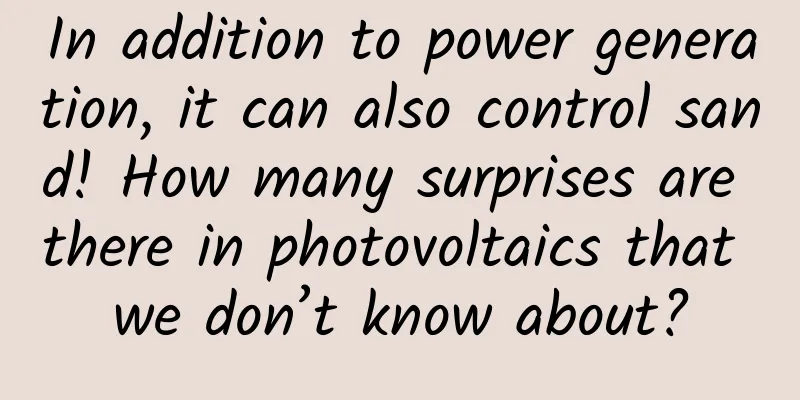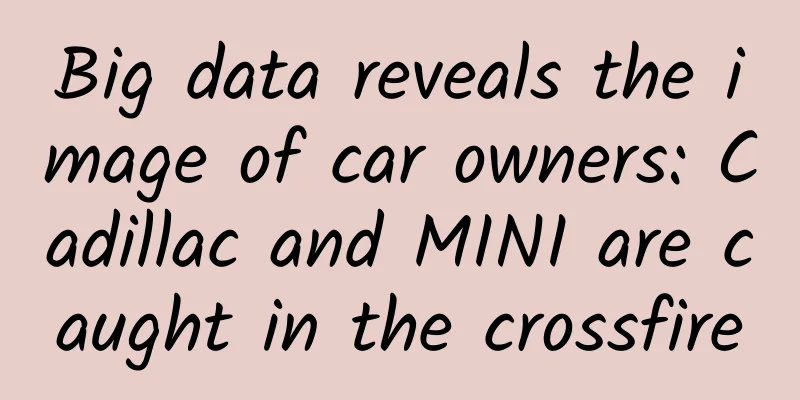In addition to power generation, it can also control sand! How many surprises are there in photovoltaics that we don’t know about?

|
□ Li Gengtuo The Forestry and Grassland Bureau of the Inner Mongolia Autonomous Region recently announced that as of the end of March, all sand control and wind power photovoltaic integration projects in various parts of Inner Mongolia have started, which will further help win the battle against the "Three Norths" project. Photovoltaic power generation base in the desert (copyright image of the gallery, reprinting may cause copyright disputes) In the Ulan Buh Desert in Dengkou County, Bayannur City, Inner Mongolia, large tracts of Haloxylon ammodendron trees sprout new green under the blue photovoltaic panels that generate concentrated solar power. In order to transform this desert, generations of sand control workers have marched to Ulan Buh, creating the "Dengkou model" of sand control and the "green miracle" of Bayannur. The "photovoltaic sand control" model that my country has successfully explored in the past 10 years has accelerated the creation of this miracle. At present, my country has taken a leading position in the world in the field of solar energy. It has also combined solar power generation with desert control and industrial development to create a new "photovoltaic sand control" model. Specifically, while using photovoltaic panels to generate electricity, plants suitable for the desert environment can also grow naturally under the photovoltaic panels, so that the desert ecology can be gradually restored, and even sheep and farming can be carried out. At the wind and photovoltaic base in Dalate Banner, Ordos City, Inner Mongolia, the pattern of galloping horses composed of 196,000 photovoltaic panels has become a popular online attraction. In general, "photovoltaic sand control" has achieved a win-win effect of power generation and sand control, development of agricultural and animal husbandry economy and even tourism economy. Deserts are often eroded by wind, forming mobile sand dunes and sandstorms. So, why can photovoltaic power generation also control sand? The column piles and pile foundations used in the construction of photovoltaic power stations increase the contact area with the sand, enhance the stability of the sand layer, and achieve the effect of consolidating sand. After the photovoltaic panels are erected, they become a shelter, which can effectively reduce wind speed, block wind and sand erosion, and stabilize the desert surface. Photovoltaic panels can also promote vegetation recovery, just like a large sunshade umbrella blocking the sun, lowering the surface temperature, reducing water evaporation, and thus promoting vegetation growth. The water sprayed during regular cleaning of photovoltaic panels promotes vegetation growth, and surface vegetation helps to fix sand and retain water on the surface. This greatly improves the "microclimate" of the sand control area and effectively reduces natural disasters such as sandstorms. The improvement of the ecology is also beneficial to solar power generation. It greatly reduces the damage of sand and dust to photovoltaic modules and ensures the normal operation of power generation facilities. So, how does photovoltaic power generation control sand? Let’s take the 2 million kilowatt photovoltaic sand control project in Kubuqi Desert, Inner Mongolia Mengxi Base, which was connected to the grid in November 2023, as an example. It is currently the largest single-unit photovoltaic sand control project in my country, which can produce about 4.1 billion kWh of green electricity annually and repair and control 100,000 mu of desert. Here, rows of photovoltaic panels block the wind and sand, presenting a beautiful scene of green grass and cattle and sheep. This is the "three magic weapons" of laying sand barriers, planting under the panels, and peripheral protection to tame the desert. Laying sand barriers, that is, laying sand barriers with reeds, straw, etc. under the photovoltaic panels and in the space between the panels of the base to fully cover the sand, so as to control the wind and sand activities, reduce the harm of wind and sand, and play a role in sand fixation. Planting under the panels, that is, making full use of the available land between and under the photovoltaic panels to plant high-quality forage grass, economic crops, etc., so as to achieve the purpose of sand control. Peripheral protection, that is, using the mixed sowing method of poplar, flower sticks, and sheep firewood, planning and building carbon sink forests, that is, windbreaks, in the desert area outside the site, and using drones to sow grass seeds in the carbon sink forest area to increase the vegetation coverage rate, enhance the sand fixation effect, and create a "photovoltaic + high-quality forage grass + carbon sink forest" demonstration area. Land desertification is a major problem that plagues human development and is also the biggest obstacle to the development of western my country. However, there are abundant solar energy resources here, which have great potential for development. Photovoltaic and sand control have inherent resource complementarity advantages. A large amount of desert and sufficient sunshine conditions provide the land and light resources required for photovoltaic power generation. The income brought by photovoltaic power generation can effectively increase the value of land, thus achieving a win-win effect of turning harm into benefit and mutual benefit. With the continuous improvement of my country's new energy policies and the advancement of photovoltaic technology, the development of various "photovoltaic + new business forms" such as "photovoltaic + sand control", "photovoltaic + agriculture", and "photovoltaic + new energy" will surely have great potential in the context of responding to climate change and promoting green development. (The author is a member of the Hunan Science Writers Association) |
>>: Xu Guanhua: Zhou Guangzhao's scientific light will always shine
Recommend
A 5.5-magnitude earthquake struck Shandong in the early morning, with more than 50 aftershocks! How to effectively escape and save yourself scientifically when encountering an earthquake?
The China Earthquake Networks Center officially d...
Are there bacteria that "eat paper" in nature?
When I saw a netizen asking "Are there bacte...
How to create an internet celebrity?
This article takes Dyson as an example and analyz...
A man who often ate freshwater sashimi contracted liver fluke disease! The 5 foods mentioned in the article are all dangerous!
Recently, a man had repeated fever after eating r...
How to operate and promote activities without money?
Event operators often face the embarrassing situa...
New AI image processing method! Tsinghua team proposes a method for generating “high-resolution” images
In the hot field of "AI image generation&quo...
Insights: The best life for adults
Famous Artists Gallery | Chen Banding, also known...
Primary school students’ “Buddhist style of skewers”, do you get it?
Review expert: Zhu Guangsi, member of Beijing Sci...
Still eating and drinking as you please? Be careful to "pick" out colon cancer...Have you fallen into these eating habits?
Our physical health is closely related to our eat...
Native vs. cross-platform: PhoneGap, Titanium, and Xamarin: pros and cons of the three major application development solutions
【51CTO.com Quick Translation】Today, companies con...
The era of paid content: both a hot topic and a hidden crisis
Last year, a wave of paid content entrepreneurshi...
What are these black spots on the edge of bus glass used for?
Image source: Tuchong Creative What are these bla...
Interpretation of the practical gameplay of Pinduoduo's low-price traffic diversion
1. Will Pinduoduo still be able to do business in...
Traffic War: How do I operate e-commerce on JD.com (Part 2)
The top-level structure of traffic logic ① Accura...
It's not that bagels are too expensive, but steamed buns are more cost-effective? What's the difference between the two?
Author: Fluent Not long ago, a short video went v...









